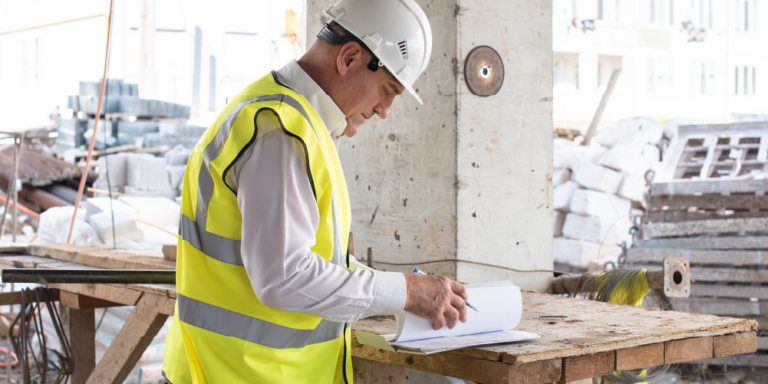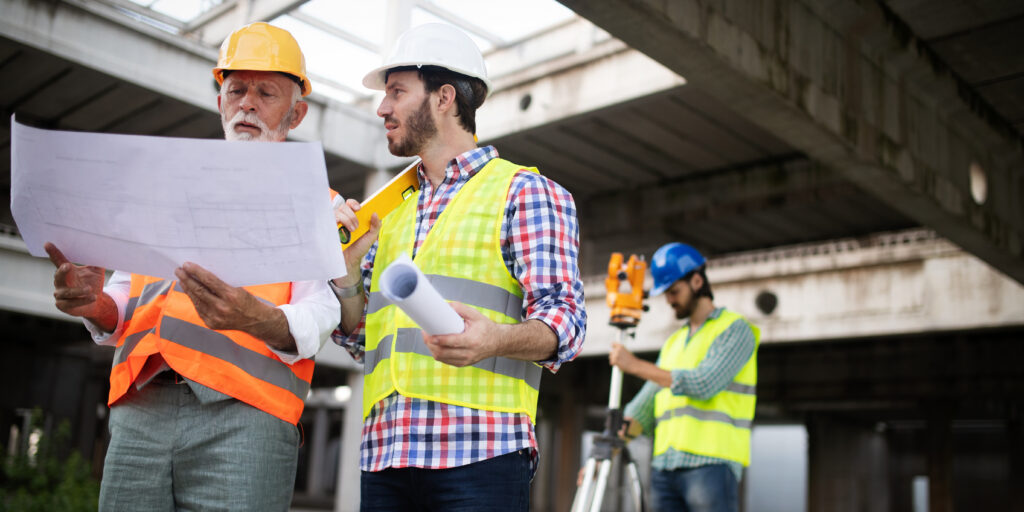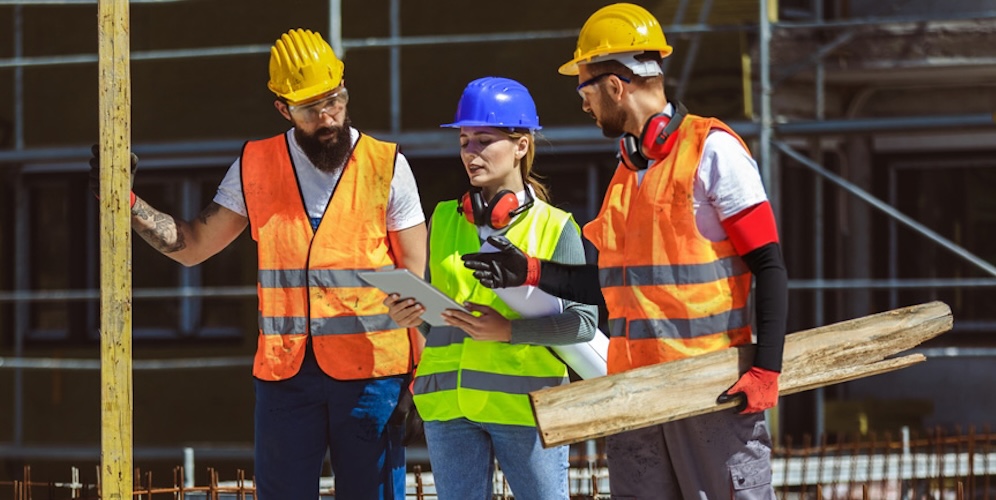— 6 min read
Understanding Incident Reporting in Construction
Last Updated Mar 26, 2025
Last Updated Mar 26, 2025

Incident reporting is the process of observing a health and safety incident on a construction project and creating a report that logs what happened and why it happened. Creating incident reports is an important part of health and safety on site, as it helps teams to identify trends, patterns, lessons learned and potential risks in future activities or projects.
Table of contents
The Evolution of Incident Reporting
In recent years, there has been a massive cultural change in the approach to health and safety (H&S). Initially, H&S requirements were viewed as problems to solve or obligations that could hinder building quickly and efficiently. Today, however, incident reporting is seen as an important aspect of construction that benefits everyone and the emphasis has shifted from fulfilling compliance obligations to keeping people safe and healthy.
More projects require H&S qualifications and certifications for companies to work on them: it’s becoming a prerequisite that people have specialist knowledge and high reporting standards. The UK tends to develop new or improved H&S practices much earlier than other countries, after which Europe typically becomes more aligned. But the UK’s standards are also influenced by the United States.
As health and safety practices have become more established and rigorous, so has incident reporting. Incident reports are now more standardised and require as much detail as is practicable (realistic and reasonable). This includes recording the time, location, the identities of the individuals involved and context of an incident. These details help with root cause analysis which, ultimately, helps people to prevent further, similar incidents. There is also now a process to report ‘near-misses,’ which helps with prevention of future incidents.
Shape the Future of the Built Environment at Procore's Construction Summit
Engage with construction leaders and discover the latest technology and best practices that are driving change across the industry.

Near-Miss Reporting
A near-miss is exactly what it sounds like: a situation where , under slightly different circumstances, the event could lead to an accident. Near-misses need to be reported on as they can provide good learning experiences, as well as alert teams to situations to risks they can avoid in the future.
An example of a near miss I remember in the UK involved a crane that failed due to an overstress of part of the structure during the installation process. Luckily there weren’t any injuries, and the damage only affected the crane itself. But we went through a deep investigation to understand what happened, which revealed a manufacturing issue.
Michele Comperti
Senior QHSE and Construction Manager
MICHELE COMPERTI SOLE TRADER
The most important part of near-miss investigations is identifying the root causes so you can put in place corrective actions. This helps manage any further risks in that specific area and helps teams to learn from what happened for the future.
It’s important to take near-miss reporting seriously. Even though an accident didn’t happen, that could be largely down to good fortune — and it doesn’t mean it wouldn’t happen next time. In cases like the crane failure example, it’s vital that you notify the supplier of the faulty equipment. Manufacturers and suppliers need to show commitment and a collaborative approach to identifying root causes, so that they can rule out the risk of the same thing happening to other customers — or notify customers of any potential risks.
Psychological Safety and Cultural Shifts
In the past, when it came to safety incidents, it was not uncommon for the individuals involved to be blamed, without trying to understand the reasons behind a particular event. Such behaviour creates a culture of blame and punishment, which can stop people from reporting incidents for fear of being singled out. This type of correction doesn’t benefit anyone in the long term. Discouraging people from reporting incidents by treating them unfairly can lead to preventable accidents and a lack of data on risks and patterns — as well as exposing managers and companies to legal and reputational risks.
You need to cultivate psychological safety, an environment and culture where team members feel empowered and safe when reporting an incident, not fearful of how they might be punished. Such an environment can be achieved through education, positive reinforcement and tone from the top.
You have to let people know why you’re giving them a set of instructions. Explain to them that following a rule will help them perform the job in a safe way, then go home to their families as safe and healthy as they were when they started — and tell them what could happen if they don’t.
Michele Comperti
Senior QHSE and Construction Manager
MICHELE COMPERTI SOLE TRADER
H&S professionals who want to emphasise the importance of certain behaviours and habits might find that involving the company director or managing director - i.e, leading by example - is a good way to embed the message. If a director comes to the site wearing full PPE and follows the rules, they set a positive example for the rest of their employees. This is much more effective than simply telling people what to do without displaying the same good behaviours yourself.
Educating your team on the impact and necessity of incident reporting is not a goal that you can reach in one shot. It’s a step-by-step process that needs to be continuously reinforced. But with persistence, it’s possible to create site-wide changes that positively impact on site safety. One way to do this is to give people incentives to report incidents and reward them for doing so effectively. Allowing people to report anonymously can also help encourage them to follow the reporting process.
How Technology Can Improve Incident Reporting
Using technology to track near-misses and incidents is a good way to bring more efficiency into your health and safety activities. Tracking this way makes it possible to spot trends and patterns in your health and safety data. For example, you might see that a particular type of PPE is repeatedly not being used properly. Simply seeing this pattern helps you investigate the issue: is the PPE that is being provided adequate and comfortable? Does the team need more education on why that PPE is necessary? Do there need to be more inspections?
Construction teams need to make sure that all projects are compliant with health and safety regulations, such as the Construction (Design and Management) Regulations 2015. Being able to target issues as soon as there is an understanding of previous incidents and potential risks is much easier thanks to technology.
Cloud-based data collection and reporting software also helps to identify issues more quickly when you’re working across a number of projects and sites.
I was following around 160 projects across Europe and the UK. If you don’t have a consistent data reporting process, it becomes impossible to be proactive and tackle issues before they become major problems.
Michele Comperti
Senior QHSE and Construction Manager
MICHELE COMPERTI SOLE TRADER
Developing reporting systems that can be accessed with mobiles is a good way to make reporting easier and more accessible. Having a system where anyone can report safety observations, incidents or illnesses is essential if you want to be effective. Putting up posters with QR codes around the site, for example, makes it easier for people to report incidents. They can scan the code with their phones and report incidents and near-misses as they happen.
Final Thoughts
Incident reporting is a crucial part of effective health and safety practices in construction. Without good incident reporting, it’s difficult to learn what went wrong and where you can adjust to create a safer environment. By educating workers and rewarding good behaviour, you can encourage a culture where incident reporting is taken seriously. There’s a big role for technology to help with this, but you need to get the education and understanding to a high level before you can effectively implement it.
Categories:
Tags:
Written by
Michele Comperti
View profileExplore more helpful resources

Leveraging Analytics for Better Financial Forecasting in Construction
Financial forecasting is a difficult task in any industry. In construction, where companies need to manage volatile material costs, labour shortages and variation orders on a daily basis, fluctuations in...

Strategies to Prevent Rework: The Importance of Clear Instructions
In construction, “rework” is the dreaded process of redoing tasks due to mistakes, quality issues, or safety concerns. This unnecessary work drains budgets through wasted materials and labour while causing...

Building a Culture of Quality in Construction: How Safety Approaches Can Transform Quality
The UK construction industry faces persistent quality issues that compromise safety, inflate costs, and erode trust. Despite universal pursuit of excellence, high rates of rework and defects cost billions annually...

Mastering Document Control in Construction Projects
The construction industry generates enormous volumes of paperwork. A single project can produce countless documents, making organisation, accessibility, and security essential. Construction document control systematically manages project-related documents, giving teams...